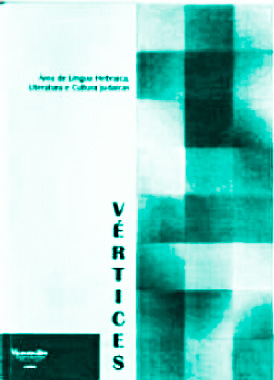Um olhar sobre as árvores sagradas na bíblia hebraica
DOI:
https://doi.org/10.11606/issn.2179-5894.ipPág.%2015%20a%2034Palavras-chave:
Árvore, Vida, Conhecimento, Bíblia Hebraica, SímboloResumo
Árvores consideradas especiais ou sagradas, como as árvores da vida, da imortalidade, do conhecimento, da compreensão, do bem e do mal, são símbolos comumente utilizados pelas culturas antigas. O poder vegetal de crescimento e frutificação e os benefícios concedidos aos homens, como a sombra, a madeira e os frutos, impulsionaram a imaginação humana. Podemos encontrar diversos exemplos de árvores na Bíblia Hebraica e nas culturas adjacentes do Oriente Próximo, mas merecem destaque as árvores centrais do Jardim do Éden: a Árvore da Vida e a Árvore do Conhecimento. A árvore sagrada pode proporcionar, além da dádiva da vida ou do conhecimento, rejuvenescimento, virtude, fertilidade, conexão de mundos, abrigo para deuses, entre muitos outros usos em rituais e mitologias antigos.
Downloads
Referências
ALBRIGHT, W. F. The Goddess of Life and Wisdom. The American Journal of Semitic Languages and Literatures, The University of Chicago Press, v. 36, n. 4, p. 258-294, jul. 1920. Disponível em: <http://www.jstor.org/stable/528330>. Acesso em: 28 jan. 2014.
A BÍBLIA Sagrada. Tradução João Ferreira D’Almeida. Rio de Janeiro: Sociedades Bíblicas Unidas, 1950.
BÍBLIA DE Jerusalém. 2. Impressão. São Paulo: Paulus, 2003.
ELIADE, M.; HALPERIN, E. P. The Prestige of the Cosmogonic Myth. Revista Diógenes, v. 6, n. 23, p. 1-13, jan. 1958. Disponível em: <https://www.researchgate.net/publication/249742014_The_Prestige_of_the_Cosmogonic_Myth?ev=pub_srch_pub>. Acesso em: 10 dez. 2013.
BIBLE HUB. 2013. Disponível em: .
BIBLE WORKS. versão 5.0. Bigfork, MT: Hermeneutika Computer Bible Research Software, 2001.
ELIADE, M. Cosmogonic Myth and 'Sacred History'. Religious Studies, Cambridge University Press, v. 2, n. 2, p. 171-183, abr. 1967. Disponível em: <http://www.jstor.org/stable/20004652>. Acesso em: 10 dez. 2013.
ELIADE, M. Tratado de História das Religiões. São Paulo: Martins Fontes, 2002.
FERREIRA, A. B. de H. Miniaurélio: o minidicionário da língua portuguesa. 7. ed. Curitiba: Positivo, 2008.
GAFNI, W. As Sete Espécies: A Oliveira. Jerusalém: Keren Kaiemet LeIsrael, [s. d.].
GRIFFITH, M. The Tree of Life as a Symbol of the Temple. Anthropology, n. 678R, dez. 1985. Disponível em: <http://www.bhporter.com/Porter%20PDF%20Files/The%20Tree%20of%20Life%20as%20a%20Symbol%20of%20the%20Temple.pdf>. Acesso em: 4 dez. 2013.
HUBNER, M. M. A Rota do Êxodo. São Paulo, 2009. 207 f. Dissertação (Mestrado em Letras). Faculdade de Filosofia, Letras e Ciências Humanas, Universidade de São Paulo, 2009.
HUNSAKER, D. The Garden of Eden and the Tree of Life: Temple Symbols in Ancient and Modern Times. 1985. Disponível em: <http://www.bhporter.com/Porter%20PDF%20FilesThe%20Garden%20of%20Eden%20and%20the%20Tree%20of%20Life%20Temple%20Symbols%20in%20Ancient%20and%20Modern%20Times.pdf>. Acesso em: 4 dez. 2013.
JAMES, E. O. The Tree of Life. In: Studies in The History of Religions. v. XI. Leiden: E. J. Brill, 1966, p. 32-43.
JASTROW, M. Jr. Another Fragment of the Etana Myth. Journal of the American Oriental Society, v. 30, n. 2, p. 101-131, mar. 1910. Disponível em: <http://www.jstor.org/stable/3087600>. Acesso em: 28 jan. 2014.
JUDAIC CLASSICS: The Soncino Talmud. versão 3.4. New York: Judaica Press, 1990.
JUDAIC CLASSICS LIBRARY.versão 2.2. New York: Judaica Press, 2001.
KRASSMAN, T. Lapislazuli: Occurence, Mining and Market Potential of a Blue Mineral Pigment. In: KRASSMAN, T. Mineral & Exploration. Disponível em: <http://www.mineral-exploration.com/mepub/lapislazuli.pdf>.
MCCARTY, J. et. al. Babilonian and Assyrian Literature: The Epic of Izdubar, Hymns, Tablets and Cuneiform Inscriptions. New York: The Colonial Press, 1901. Disponível em: <http://www.archive.org/details/babylonianassyriOOwilsuoft>. Acesso em: 16 dez. 2013.
McDONALD, J. A. Botanical Determination of the Middle Eastern Tree of Life. Economic Botany, New York Botanical Garden Press, v. 56, n. 2, p. 113-129, 2002. Disponível em: <http://www.jstor.org/stable/4256546>. Acesso em: 11 dez. 2013.
PARPOLA, S. The Assyrian Tree of Life: Tracing the Origins of Jewish Monotheism and Greek Philosophy. Journal of Near Eastern Studies, The University of Chicago Press, v. 52, n. 3, p. 161-208, jul. 1993. Disponível em: <http://www.jstor.org/stable/545436>. Acesso em: 11 dez. 2013.
PHILO. The Works of Philo Judaeus of Alexandria. Tradução Charles Duke Yonge. London: H. G. Bohn, 1894.
PINCHES, T. G. The Old Testament in the light of the historical records and legends of Assyria and Babylonia. London: Elibron Classics, 2004.
PRITCHARD, J.B. (Ed.). The Ancient Near East: An Anthology of Texts & Pictures. Princeton, NJ: Princeton University Press, 2011.
STEINSALTZ, A. A Rosa de Treze Pétalas. São Paulo: Maayanot, 1992.
THE SEPHER Ha-Zohar or The Book of Light: Bereshith to Lekh Lekha. Tradução Nurho de Manhar. Ed. H. W. Percival. New York: Theosophical Publishing Company, 1914. Disponível em: <http://www.sacred-texts.com/jud/zdm/index.htm>. Acesso em: 29 jan. 2014.
TORÁ: A Lei de Moisés. Tradução de Meir Matzliah Melamed. São Paulo: Sefer, 2001.
WOOD, W. C. The Religion of Canaan: From the Earliest Times to the Hebrew Conquest. Journal of Biblical Literature, The Society of Biblical Literature, v. 35, n. 1/2, p. 1-133, 1916. Disponível em: <http://www.jstor.org/stable/3259344>. Acesso em: 24 jun. 2013.
ZUKERWAR, C. D. As 3 Dimensões da Kabalá: Essência, Infinito e Alma. São Paulo: Sefer, 1997.
Downloads
Publicado
Edição
Seção
Licença
Copyright (c) 2014 Manu Marcus Hubner

Este trabalho está licenciado sob uma licença Creative Commons Attribution-NonCommercial-ShareAlike 4.0 International License.



